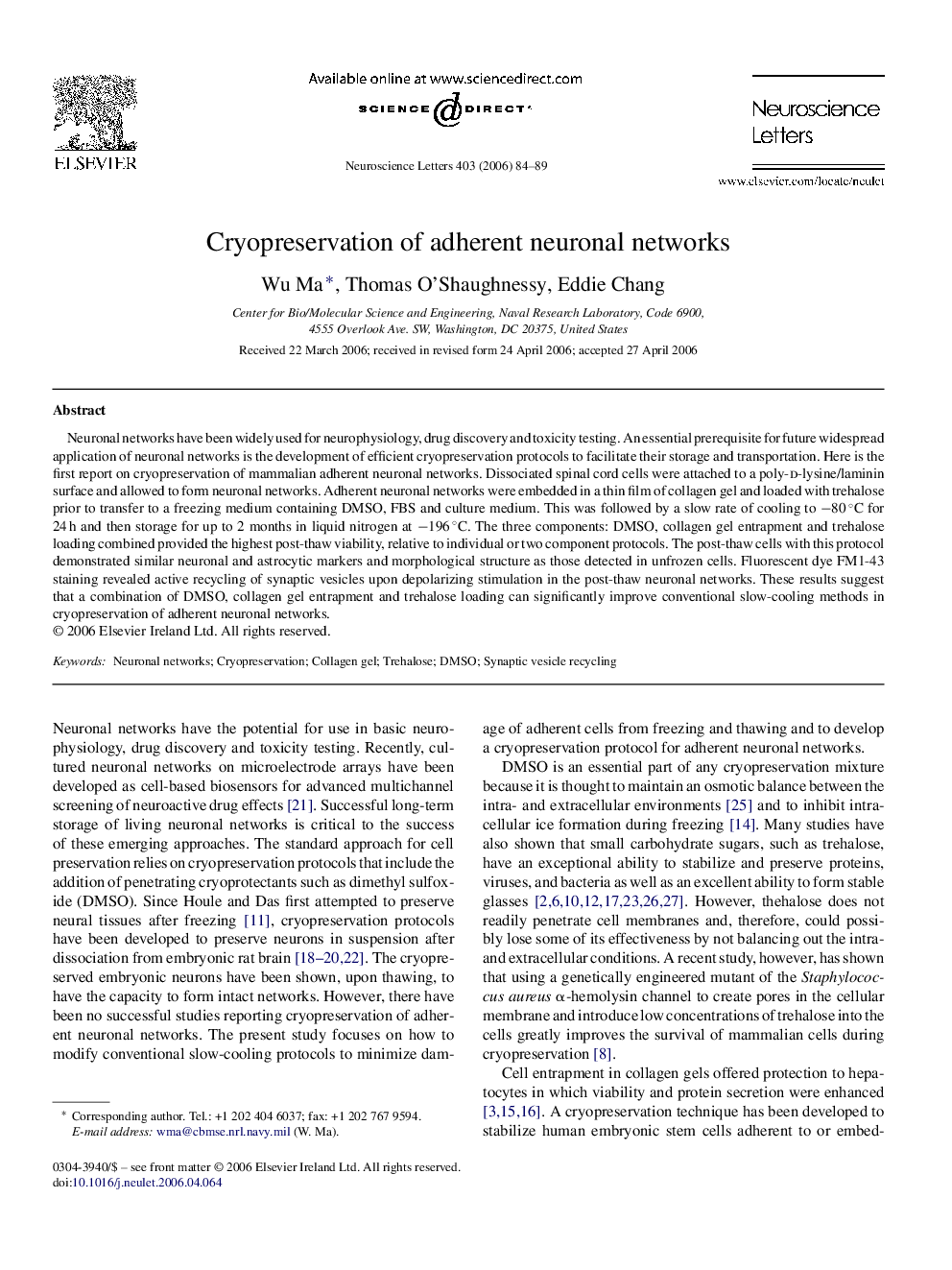| Article ID | Journal | Published Year | Pages | File Type |
|---|---|---|---|---|
| 4350405 | Neuroscience Letters | 2006 | 6 Pages |
Neuronal networks have been widely used for neurophysiology, drug discovery and toxicity testing. An essential prerequisite for future widespread application of neuronal networks is the development of efficient cryopreservation protocols to facilitate their storage and transportation. Here is the first report on cryopreservation of mammalian adherent neuronal networks. Dissociated spinal cord cells were attached to a poly-d-lysine/laminin surface and allowed to form neuronal networks. Adherent neuronal networks were embedded in a thin film of collagen gel and loaded with trehalose prior to transfer to a freezing medium containing DMSO, FBS and culture medium. This was followed by a slow rate of cooling to −80 °C for 24 h and then storage for up to 2 months in liquid nitrogen at −196 °C. The three components: DMSO, collagen gel entrapment and trehalose loading combined provided the highest post-thaw viability, relative to individual or two component protocols. The post-thaw cells with this protocol demonstrated similar neuronal and astrocytic markers and morphological structure as those detected in unfrozen cells. Fluorescent dye FM1-43 staining revealed active recycling of synaptic vesicles upon depolarizing stimulation in the post-thaw neuronal networks. These results suggest that a combination of DMSO, collagen gel entrapment and trehalose loading can significantly improve conventional slow-cooling methods in cryopreservation of adherent neuronal networks.
